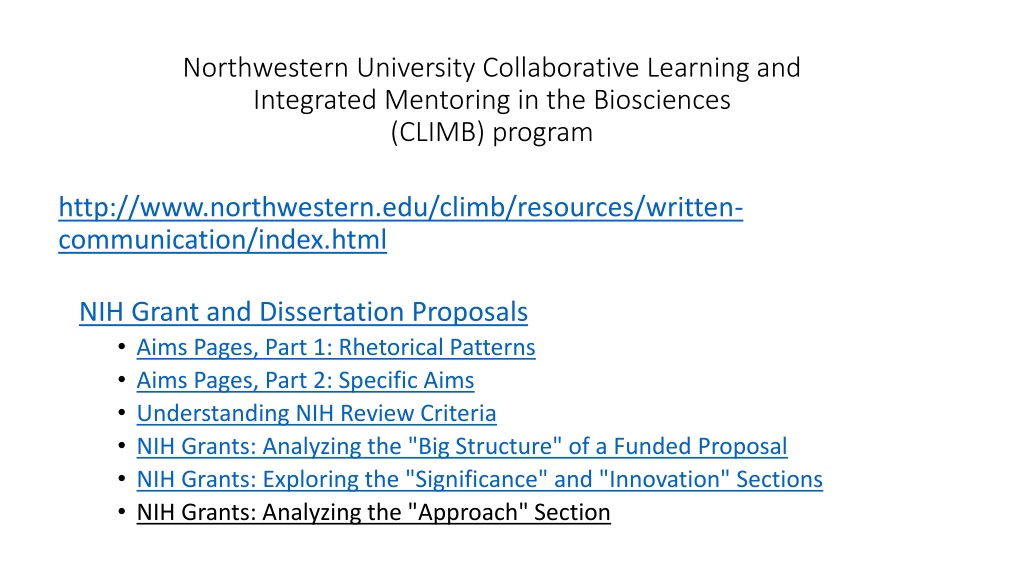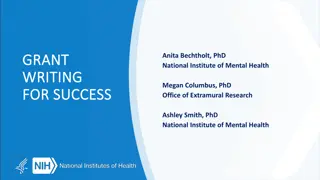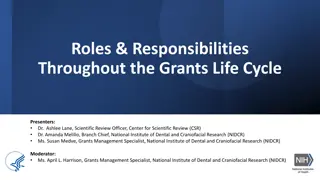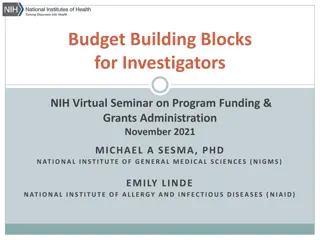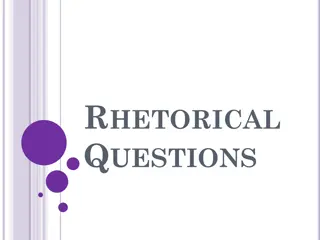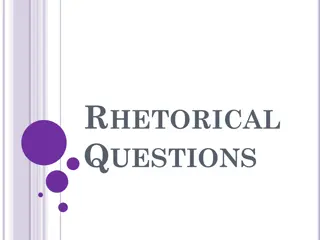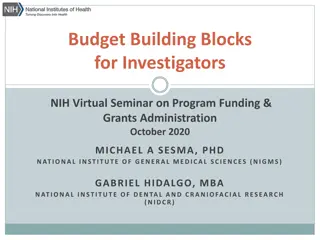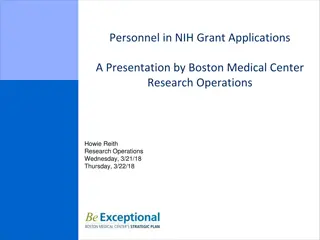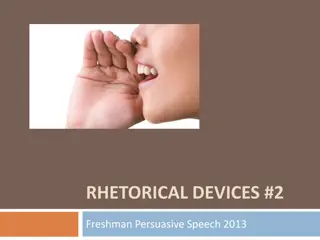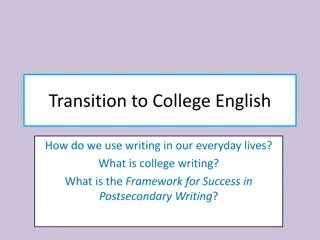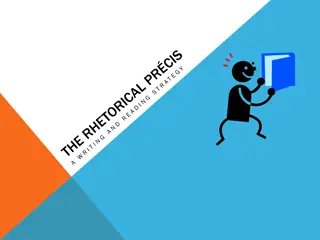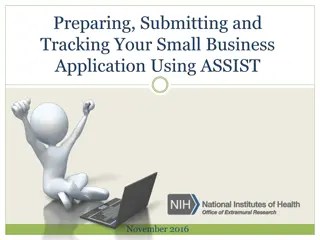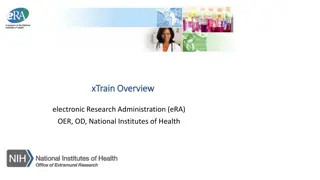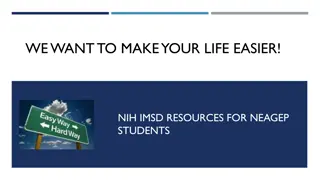Understanding Rhetorical Patterns in NIH Grant Proposals
Explore the essential components of NIH grant proposals, focusing on Specific Aims sections. Learn to articulate the big picture, research significance, central problem/question, goals, and hypothesis clearly. Emphasize literature support, research contribution, and qualifications to successfully present your aims and innovation for impactful proposals.
Download Presentation

Please find below an Image/Link to download the presentation.
The content on the website is provided AS IS for your information and personal use only. It may not be sold, licensed, or shared on other websites without obtaining consent from the author. Download presentation by click this link. If you encounter any issues during the download, it is possible that the publisher has removed the file from their server.
E N D
Presentation Transcript
Northwestern University Collaborative Learning and Integrated Mentoring in the Biosciences (CLIMB) program http://www.northwestern.edu/climb/resources/written- communication/index.html NIH Grant and Dissertation Proposals Aims Pages, Part 1: Rhetorical Patterns Aims Pages, Part 2: Specific Aims Understanding NIH Review Criteria NIH Grants: Analyzing the "Big Structure" of a Funded Proposal NIH Grants: Exploring the "Significance" and "Innovation" Sections NIH Grants: Analyzing the "Approach" Section
Rhetorical patterns in Specific Aims Introductions What is the big picture for the research? Why is it important? General Context and Significance Narrowing Context What is known and accepted on this topic, in this area? Your research contribution How did your own work contribute to this knowledge? Complication What is the central problem/question to be addressed? Long Term/Broad Goals What are the overarching goals of your research program? Specific and Narrow Research Goals What specific goals will this particular project attain? Clearly articulate your hypothesis, showing how it derives from the considerations above Hypothesis clearly stated Literature/preliminary results supporting hypothesis Justify the hypothesis with literature/preliminary data Qualifications stressed Why are you particularly well suited to test the hypothesis? State the specific aims in a logical sequence and connected to the hypothesis, each aim built on a sub-hypothesis Briefly mention the importance/innovation of the project Specific Aims Conclusions: Innovation, Impact and Translation
Rhetorical pattern in Specific Aims introduction Specific and Narrow Research Goals General Context and Significance Long Term/Broad Goals Narrowing Context Your research contribution Hypothesis clearly stated Complication (=what is the central problem/question?) Literature/preliminary results supporting hypothesis Long Term/Broad Goals impact - translation General Context and Significance Specific and Narrow Research Goals Complication (=what is the central problem/question?) Hypothesis clearly stated Narrowing Context Literature/preliminary results supporting hypothesis Your research contribution Qualifications stressed Qualifications stressed
Specific Aims General Context and Significance What is the logic flow of your hypothesis? Is each aim an elaboration of one or a few elements, in the logic flow of your hypothesis? Does each aim have its own sub-hypothesis, explicitly or implicitly clear? Does each aim have a specific outcome? In other words, are the expected results clear to the reader? Narrowing Context Your research contribution Complication Long Term/Broad Goals Specific and Narrow Research Goals Hypothesis clearly stated Literature/preliminary results supporting hypothesis Qualifications stressed Specific Aims Does the conclusions section articulate the broader impact of the research, its innovation and potential translation? Conclusions
Characteristics of Specific Aims Logically developed and coherent to the overall hypothesis Each aim explores a sub-hypothesis within the overall hypothesis Aims are independent of one another (avoid linear structure) Aims clearly address the sub-hypotheses, and are designed to provide unambiguous and interpretable results Aims are within the expertise of the research team: include a paragraph explaining why your research team is optimally qualified for the work proposed Aims utilize unique or particularly appropriate models and state-of-the-art approaches or techniques Conclude Specific Aims page with a statement about significance, innovation, broad impact and translational potential
